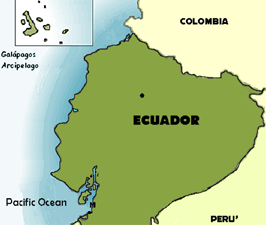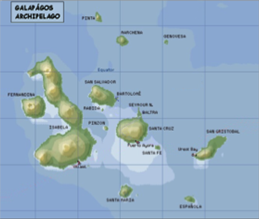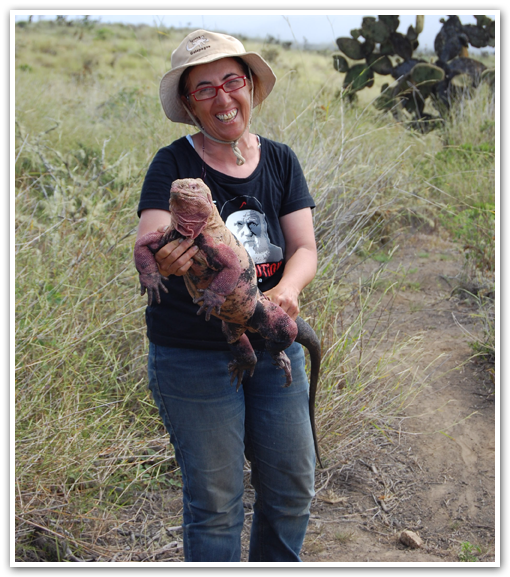Microbiota of Galapagos iguanas and Aeolian sea turtles
To preserve environment and biodiversity is a major challenge of modern science. In the strategy of conservation, based on the implementation of basic knowledge, the identification of the intestinal microbiota of wild organisms (i.e. land iguanas from the Galapagos Islands and turtles from the Aeolian Islands) can be used as both basic knowledge and application tool.The quantitative and qualitative definition of microorganisms inhabiting the digestive tract of these reptiles, can provide an overview of great interest and it is still largely unexplored, while the comparison of the intestinal microbiota from urbanized and wild areas, can be another way to assess the impact of human presence.
The transfer of antibiotic resistance is a marker to follow the exchange of microorganisms between the man-impacted and natural compartments. The analysis of the incidence and nature of the genetic determinants of antibiotic resistance that occur naturally and/or are acquired by enteric bacteria of the intestinal microbiota, is an additional tool for evaluating the human impact by comparing the results found in animals from urbanized areas or intact ones.The work was started on land iguanas from the Galapagos Archipelago, a particularly interesting case because some islands are not exposed to human impact and so we can have some indication of the wildlife in the absence of disturbances, while others are subject to human impact (indigenous and/or tourists). From this system it is possible to get information on both the changes that already took place and on those in progress: a sort of "experiment-control" structure. The project included both the identification of the main components of the microbiota associated with the cloaca of land and marine iguanas, both the incidence and nature of resistance determinants.
The same work is now in progress on land iguanas from the French Antilles, in the Caribbean Sea.
The same aim and experimental approach has been applied to the study of the incidence and nature of resistance determinants in the intestinal microbiota of sea turtles (Caretta caretta L.) sampled in the Filicudi Island area, Aeolian Archipelago. In this case, healthy turtles were compared to others suffering feeding problems due to ingested hooks or plastic bags. Furthermore, on these sea turtles a pilot study was launched aimed both to evaluate the structure and composition of the entirety of carapace colonizers and to set up a unitary protocol for this type of study: both the macro-colonizers (epiphytic macroalgae, crustaceans, etc.) and the micro-colonizers (i.e. bacterial community) were analysed. Bacterial colonizers were analysed by using NGS (Next Generation Sequencing).
This work was possible thanks to the collaborations with: Gabriele Gentile, Department of Biology, Tor Vergata University, for iguanas; Monica Blasi, Filicudi Wildlife Conservation Association, Filicudi (Messina), Daniela Mattei of the National Health Institute in Rome, and Valeria Alduina, Department of Biological, Chemical and Pharmaceutical Sciences and Technologies, University of Palermo, for the sea turtles.
Blasi M.F., Rotini A., Bacci T., Targusi M., Bonanno Ferraro G., Vecchioni L., Alduina R. and Migliore L. (2021). ON CARETTA CARETTA’S SHELL: FIRST SPATIAL ANALYSIS OF MICRO- AND MACRO-EPIBIONTS ON THE MEDITERRANEAN LOGGERHEAD SEA TURTLE CARAPACE. Marine Biology Research, 17(7-8): 726-774. DOI: 10.1080/17451000.2021.2016840
The loggerhead sea turtle, Caretta caretta (Linnaeus, 1758), is the most common sea turtle species in the Mediterranean Sea, where it can experience severe anthropogenic impacts. Although C. caretta is known to host more than 200 epibiotic taxa (crustaceans, algae and cyanobacteria), no reports have included a detailed evaluation of the microbial community of its carapace scutes. Thus, this study aimed to determine the diversity and composition of the visible and invisible communities on the carapace scutes of wild loggerhead turtles from the Aeolian Archipelago (Southern Tyrrhenian Sea, Italy) by using a combined approach of morphological/spatial examination and molecular analyses. Altogether, our results displayed a higher abundance of crustaceans, macroalgae and Proteobacteria on the posterior carapace scutes, while Firmicutes were more abundant on the anterior scutes. For the first time, this study showed the complexity of the microbial (invisible) and visible epibionts of the loggerhead sea turtles from the Mediterranean Sea and suggests the importance of including evaluation of the microbial components when studying epibiont communities.
Di Lallo G., D’Andrea M.M., Sennati S., Thaller M.C., Migliore L., Gentile G. (2021). EVIDENCE OF ANOTHER ANTHROPIC IMPACT ON IGUANA DELICATISSIMA FROM THE LESSER ANTILLES: THE PRESENCE OF ANTIBIOTIC RESISTANT ENTEROBACTERIA. Antibiotics, 10(8): 885. DOI: 10.3390/antibiotics10080885
The improper use of antibiotics by humans may promote the dissemination of resistance in wildlife. The persistence and spread of acquired antibiotic resistance and human-associated bacteria in the environment, while representing a threat to wildlife, can also be exploited as a tool to monitor the extent of human impact, particularly on endangered animal species. Hence, we investigated both the associated enterobacterial species and the presence of acquired resistance traits in the cloacal microbiota of the critically endangered lesser Antillean iguana (Iguana delicatissima), by comparing two separate populations living in similar climatic conditions but exposed to different anthropic pressures. A combination of techniques, including direct plating, DNA sequencing and antimicrobial susceptibility testing allowed us to characterize the dominant enterobacterial populations, the antibiotic resistant strains and their profiles. A higher frequency of Escherichia coli was found in the samples from the more anthropized site, where multi-drug resistant strains were also isolated. These results confirm how human-associated bacteria as well as their antibiotic-resistance determinants may be transferred to wildlife, which, in turn, may act as a reservoir of antibiotic resistance.
Blasi M.F., Migliore L., Mattei D., Rotini A., Thaller M.C., Alduina R. (2020) - ANTIBIOTIC RESISTANCE OF GRAM-NEGATIVE BACTERIA FROM WILD CAPTURED LOGGERHEAD SEA TURTLES. Antibiotics, 9: 162. DOI: 10.3390/antibiotics9040162
Sea turtles have been proposed as health indicators of marine habitats and carriers of antibiotic-resistant bacterial strains, for their longevity and migratory lifestyle. Up to now, a few studies evaluated the antibacterial resistant flora of Mediterranean loggerhead sea turtles (Caretta caretta) and most of them were carried out on stranded or recovered animals. In this study, the isolation and the antibiotic resistance profile of 90 Gram negative bacteria from cloacal swabs of 33 Mediterranean wild captured loggerhead sea turtles are described. Among sea turtles found in their foraging sites, 23 were in good health and 10 needed recovery for different health problems (hereafter named weak). Isolated cloacal bacteria belonged mainly to Enterobacteriaceae (59%), Shewanellaceae (31%) and Vibrionaceae families (5%). Although slight differences in the bacterial composition, healthy and weak sea turtles shared antibiotic-resistant strains. In total, 74 strains were endowed with one or multi resistance (up to five different drugs) phenotypes, mainly towards ampicillin (~70%) or sulfamethoxazole/trimethoprim (more than 30%). Hence, our results confirmed the presence of antibiotic-resistant strains also in healthy marine animals and the role of the loggerhead sea turtles in spreading antibiotic-resistant bacteria.
Thaller M.C., Migliore L., Marquez C., Tapia W., Cedeño V., Rossolini G.M., Gentile G. (2010). TRACKING ACQUIRED ANTIBIOTIC RESISTANCE IN COMMENSAL BACTERIA OF GALÁPAGOS LAND IGUANAS: NO MAN, NO RESISTANCE. PLoS One, 5(2): e8989. DOI: 10.1371/journal.pone.0008989
 |
 |

Luciana mostra l’iguana rosa (Conolophus marthae), n. 100, vulcano Wolf, Galapagos, giugno 2009.

